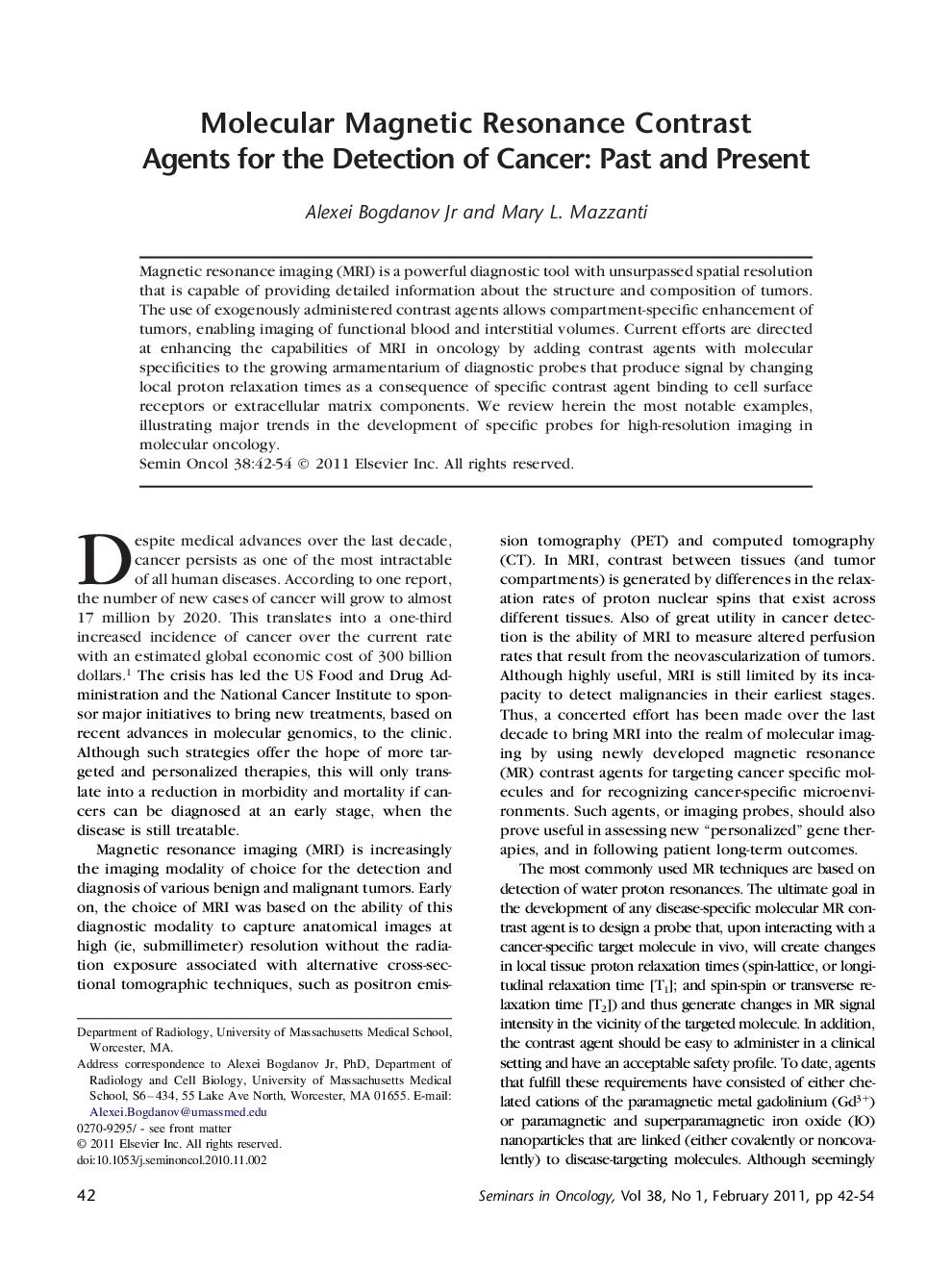| Article ID | Journal | Published Year | Pages | File Type |
|---|---|---|---|---|
| 2162444 | Seminars in Oncology | 2011 | 13 Pages |
Abstract
Magnetic resonance imaging (MRI) is a powerful diagnostic tool with unsurpassed spatial resolution that is capable of providing detailed information about the structure and composition of tumors. The use of exogenously administered contrast agents allows compartment-specific enhancement of tumors, enabling imaging of functional blood and interstitial volumes. Current efforts are directed at enhancing the capabilities of MRI in oncology by adding contrast agents with molecular specificities to the growing armamentarium of diagnostic probes that produce signal by changing local proton relaxation times as a consequence of specific contrast agent binding to cell surface receptors or extracellular matrix components. We review herein the most notable examples, illustrating major trends in the development of specific probes for high-resolution imaging in molecular oncology.
Related Topics
Life Sciences
Biochemistry, Genetics and Molecular Biology
Cancer Research
Authors
Alexei Jr, Mary L. Mazzanti,
